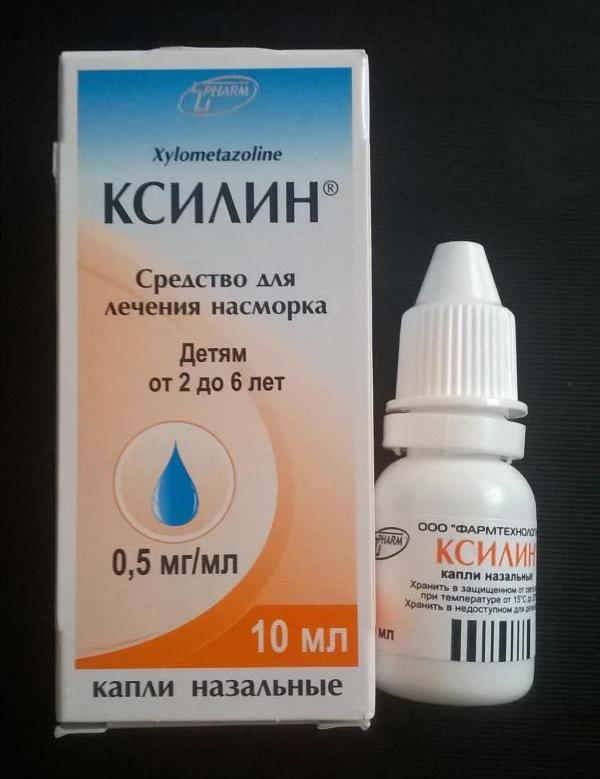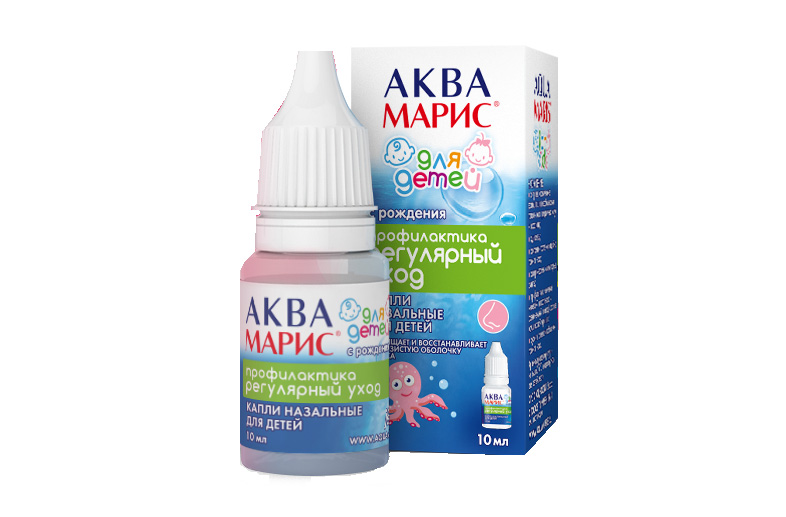Vasomotor rhinitis is a chronic disease caused by the expansion of the blood vessels of the nasal cavity under the influence of external or internal factors. With an incorrect reaction of the vessels to irritants, a persistent nasal congestion appears. How to distinguish chronic vasomotor rhinitis in a child from ordinary inflammation of the mucosa, from the common cold and cure it effectively?
What is vasomotor rhinitis?
The basis of vasomotor rhinitis is not an inflammatory process, but a violation of the regulation of the tone of the vessels located in the lower region of the nasal concha. Their increased activity on various types of stimuli arises, both external and internal. It should be noted that pathogenic viruses and microbes in the development of vasomotor rhinitis initially do not play any role. But later, with a change in vascular tone, secondary infection by pathogenic microorganisms may well form, as a result, the nature of the discharge will also change.
Causes of vasomotor rhinitis in children
Kids with vasomotor rhinitis get sick for a number of reasons, and their treatment always depends on the factor that provoked the disease. The main reasons are:
- congenital or acquired curvature of the nasal septum;
- the presence of polyps in the nose or adenoids in the throat;
- prolonged use of certain anti-inflammatory or vasoconstrictor drugs;
- frequent stressful situations;
- increased physical activity;
- poor environmental conditions;
- exposure to pungent odors;
- hypothermia;
- weakened immunity;
- hormonal disruptions;
- the influence of the nutritional factor.
In addition, a vasomotor runny nose occurs with vegetovascular disorders, the appearance of neoplasms and climate change.
The main forms of the disease
There are three main forms of vasomotor rhinitis in children:
- Allergic - develops when an allergen enters the mucous membrane of the nasal cavity, which may be: plant pollen, animal hair, food, dust, medications, and polluted air. Runny nose appears seasonally or continuously throughout the year.
- Neurovegetative - associated with violations in the work of a department of the autonomic nervous system or with vegetovascular dystonia. As a result, the child has a hormonal imbalance, the endocrine system, changes in blood pressure, the tone of the vessels of the nose changes. With slight irritation, the nasal congestion swells and it becomes difficult to breathe.
- Medication - occurs with abuse of vasoconstrictor medications. If the parents do not follow the dosage or use the drug for more than five to seven days, there is a plentiful exudation and constant nasal congestion.
Depending on the form of the disease of vasomotor rhinitis in children, the symptoms and treatment will have certain differences.
Signs of a manifestation of the disease
All symptoms of the disease are divided into primary and secondary. Primary:
- periodic appearance of mucous secretions, sometimes without specific reasons;
- nasal congestion;
- the occurrence of itching in the nose and the appearance of sneezing;
- coughing and nausea due to drainage of mucus along the back of the larynx.
The secondary symptoms of vasomotor rhinitis in a child are:
- tearing;
- violation of smell;
- changing the tone of voice;
- insomnia;
- fatigue;
- sweating.
Nasal congestion most often occurs when lying down and on one side, and then on the other. Puffiness on the face may appear. In neglected cases, the condition of the child worsens, the ventilation of the lungs is disturbed, and due to poor supply of oxygen to the brain cells, hypoxia of the brain occurs.
Diagnostics
Treatment of vasomotor rhinitis in a child begins only after an accurate confirmation of the diagnosis and identification of the causes that caused it. To do this, when contacting a doctor after talking with parents and collecting an anamnesis, the child is assigned such studies:
- analysis of urine and blood (general);
- blood tests for allergen content;
- skin allergy tests;
- X-ray examination of the sinuses;
- rhinoscopy;
- examination with an endoscope.
After receiving the results of all examinations, the child is prescribed appropriate therapy.
Drug treatment of the disease
A competent choice of medications in the treatment of vasomotor rhinitis in a child is the most crucial step. Not only the result depends on this, but also his health in the future. There are several groups of drugs used in treatment:
- Vasoconstrictors - help reduce swelling of the nasal mucosa. They have a quick effect, immediately stop the discharge from the nose and facilitate breathing. An important condition is to observe the dosage prescribed by the doctor and the maximum time for using the drug (no more than 7 days). For treatment use "Naphthyzinum", "Xylen", "Nazivinum".

- Moisturizing and softening - provide a thinning of the mucus, which is then easily removed from the nose, preventing pathogenic microbes from developing. Funds can be used up to four or more times a day. They are available in various forms and are equipped with nozzles for gentle metered spraying when used in young children. The use of drugs based on sea water prevents puffiness and improves immunity. Often use "Rinostop Aqua", "Marimer", "Aquamaris", "Aqualor".
- Antihistamines - stabilize mast cell membranes. Children are prescribed syrups and drops inside: "Erius", "Claritin", "Suprastinex", "Zodak", "Peritol". Sprays and drops in the nose: "Histimet", "Vibrocil", "Vividrin." In severe cases, glucocorticosteroids are prescribed: Avamis, Nozefrin, Benarin.
- To increase immunity use: Cycloferon, Immunal, Interferon.

When treating the symptoms of vasomotor rhinitis in children, it is necessary to give them more fluid: water, fruit drinks, fruit drinks, freshly squeezed juices. In the room, systematically carry out wet cleaning, do airing and humidification procedures. If therapy fails, use a laser to cauterize blood vessels in the nasal cavity.
Physiotherapeutic treatments
In the treatment of vasomotor rhinitis, physiotherapeutic procedures occupy a special place:
- Inhalations - help moisturize the mucous membrane, thin the mucus, and then remove it. To perform the procedure, apply a saline solution or diluted sea salt, adding essential oils to it.
- Kuf therapy - using ultraviolet rays. This procedure helps to restore damaged and atrophied tissues, promotes the production of the hormone melanin and vitamin D. When a secondary infection is attached, it destroys pathogenic microflora.
- UHF-therapy - the treatment of vasomotor rhinitis in a child using this procedure is carried out through the influence of high-frequency currents on the nasal cavity. As a result, swelling decreases, blood flow in the tissues increases, pain is relieved. UHF is prescribed for children from the age of three.
All physiotherapeutic procedures are carried out in conjunction with drug treatment.
Folk remedies for the treatment of rhinitis
To help medical and physiotherapeutic treatment, the condition of the child can be alleviated using simple folk remedies:
- Give your child a plentiful drink, using clean water, fruit drinks, freshly squeezed juices, compotes.
- When treating a child with vasomotor rhinitis, it is necessary to rinse the nose several times a day using soda or saline. To do this, dissolve a teaspoon of soda or table salt in a liter of warm boiled water.
- Carry inhalation with herbal infusion, in which a few drops of oil are added. They soften the nasal mucosa and contribute to the rapid passage of mucus.
- Instill 2-3 drops of oil solutions every two hours into the nose, using oily vitamin A, liquid paraffin and olive oil.
- To increase immunity, they drink a rosehip broth and echinacea tincture.
All these procedures will help ease the baby’s breathing.
Surgery
How to treat vasomotor rhinitis in a child? In the event that all methods of conservative therapy have been tried, surgical treatment is prescribed. Babies undergo surgery only if they detect birth defects or the growth of a tumor in the nasal cavity. Surgical treatment of a vasomotor rhinitis is prescribed for children after 12 years of age with a complete absence of nasal breathing. All operations are performed using general anesthesia. Wherein:
- Polyps are removed with a coagulator to reduce bleeding.
- Swelling of the mucous membrane is treated with a laser, burning thin strips on the shell of the nasal concha;
- Laser photodestruction eliminates the expansion of veins and arteries.
- With mucosal hypertrophy, ultrasound removes excess tissue, making breathing easier.
After any surgery, in order to avoid bleeding, do the plugging of the nasal passages.
Komarovsky treatment
Komarovsky calls vasomotor rhinitis an unpleasant, but not a serious disease. This type of runny nose in children often occurs as an allergic reaction of the nasal mucosa to an irritant:
- aromatic substances;
- infections
- various dust;
- medications;
- differences in humidity and temperature.
In addition to the allergic form, it is often neurodynamic when, when the nerve mechanisms responsible for the physiology of the nasopharynx are disturbed, the vessels of the nasal mucosa are narrowed. Vasomotor rhinitis is characterized by nasal congestion, watery, colorless discharge, headache, problems with sleep and memory. A similar ailment often affects hypotension.
Treatment of vasomotor rhinitis in children according to Komarovsky is carried out comprehensively using:
- medicines;
- physiotherapy;
- general strengthening measures.
If the baby's nose is blocked, it is necessary to consult a doctor. Moreover, vasomotor rhinitis in infants practically does not occur due to the underdevelopment of the cavernous tissue of the nasal cavity.
Allergic rhinitis
If allergic rhinitis is suspected, the doctor prescribes a blood test for immunoglobulin E and the content of eosinophils. In addition, to prescribe the treatment of vasomotor rhinitis in children from 3 years old, skin tests can be performed to identify the type of allergen. In a child’s derma, the hands make a small incision into which the allergen is injected. The appearance of edema and redness confirms hypersensitivity to the tested stimulus. Having established a specific allergen, the first thing it needs to be eliminated. In most cases, after this, the child completely recovers. If you can not get rid of the stimulus, then spend:
- Symptomatic treatment of vasomotor allergic rhinitis in children. For this, nasal vasoconstrictors, antihistamines, intranasal aerosols and sprays are used.
- Allergen-specific therapy. The child is given increasing doses of the allergen to develop the body's resistance to it. With successful treatment, this method relieves the baby from a painful runny nose.
Complications of vasomotor rhinitis
With a long-lasting course from the nose, the following complications are possible:
- Acute sinusitis, sinusitis, otitis media, and chronic tonsillitis develop.
- Sleep is disturbed, weakness and fatigue appear.
- Perhaps a heart rhythm disorder, a change in blood pressure.
- The appearance of snoring, short-term respiratory arrest in a dream, which causes oxygen starvation of the body.
In order to avoid all these consequences, it is necessary to consult a doctor in time for prescribing treatment.
Vasomotor rhinitis in a child, reviews
Many babies suffer from vasomotor rhinitis, and parents often discuss this problem in forums. According to reviews, everyone has one problem: severe nasal congestion, the child cannot completely breathe at night, often snores and is constantly ill with colds.
- Many people use Nazonex. Reviews are different, some say that breathing becomes free, the drug does not help others at all.
- Parents also report that the removal of adenoids does not always help.
- Often there are good reviews about the use of Avamis. With its use, breathing normalizes.
Some good effect is noted from a prolonged stay (at least a month) of the child at sea. From the first days, abundant discharge from the nose begins, after which breathing improves, and the child breathes calmly day and night. But on returning home and starting to visit the kindergarten, a runny nose appears again. Exemption from the disease requires daily preventative measures, including strengthening immunity.